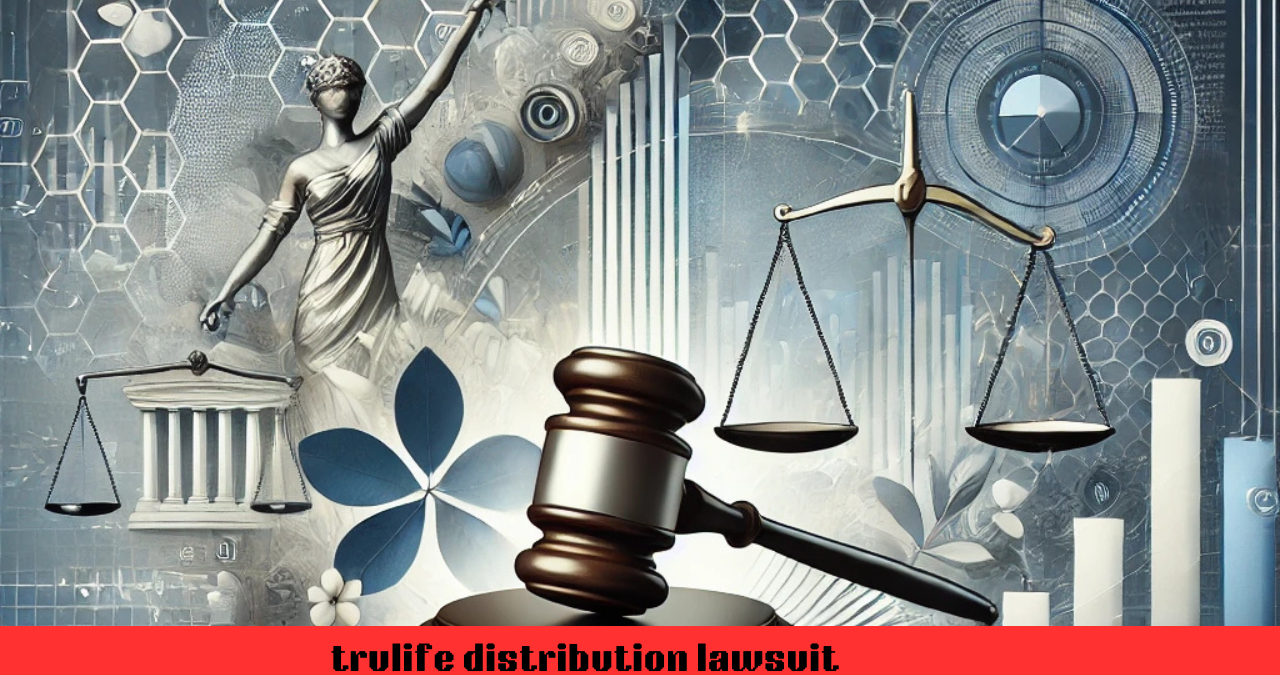Introduction
In the competitive world of business, companies are often faced with legal challenges that can alter their trajectory. Trulife Distribution, a prominent player in the distribution industry, recently found itself at the center of a highly publicized lawsuit. This article delves into the intricacies of the case, exploring its background, the claims made, and the broader implications for the company and the industry as a whole. For business professionals and curious onlookers alike, understanding this lawsuit provides valuable insights into navigating the complex intersection of business operations and legal frameworks.
Background of Trulife Distribution
Trulife Distribution has built a reputation as a reliable distribution company, specializing in bringing innovative products to the market. Founded with a mission to connect emerging brands with retailers and consumers, the company’s portfolio includes health supplements, beauty products, and lifestyle goods. Known for its efficient logistics and market strategies, Trulife Distribution carved out a significant presence in its industry.
Before the lawsuit, the company was widely recognized for its commitment to quality and customer satisfaction. However, like any growing organization, it faced challenges, including increased scrutiny as its influence expanded. The lawsuit not only tested the company’s resilience but also raised questions about its internal processes and business ethics. For stakeholders, understanding the company’s pre-lawsuit trajectory sheds light on the stakes involved in this legal battle.
Details of the Lawsuit

The lawsuit against Trulife Distribution unfolded in a series of high-stakes developments. It began when allegations surfaced claiming breaches of contract and unethical business practices. The plaintiffs, a group of former business partners, accused the company of failing to honor contractual agreements and engaging in deceptive practices that allegedly caused financial harm.
The legal filings outlined specific grievances, including delays in payments, misrepresentation of product performance, and questionable marketing tactics. These accusations quickly caught the attention of the industry and media, turning the spotlight onto Trulife Distribution. In response, the company issued statements denying the claims, asserting that the allegations were unfounded and part of a campaign to tarnish its reputation.
During court proceedings, both sides presented evidence to support their positions. The plaintiffs showcased documents and testimonials to substantiate their claims, while Trulife Distribution’s legal team argued that the accusations were based on misinterpretations and a lack of understanding of standard business practices. The case’s complexity underscored the challenges companies face in maintaining transparency and ethical operations while navigating competitive pressures.
Impact on Trulife Distribution and Stakeholders
The lawsuit’s impact on Trulife Distribution was profound, affecting multiple facets of its operations. From a business perspective, the legal battle strained the company’s resources, redirecting funds and attention away from growth initiatives. Revenue streams were affected as key clients hesitated to engage with a company embroiled in controversy. The ripple effects extended to the workforce, with morale taking a hit due to the uncertainty surrounding the company’s future.
Stakeholders, including investors and business partners, reacted with caution. The negative publicity generated by the lawsuit created reputational challenges that Trulife Distribution had to work hard to address. On the consumer front, trust was shaken, particularly among customers who value transparency and ethical practices in the companies they support.
The lawsuit also had broader industry implications. Competitors took the opportunity to strengthen their positions, using the controversy as a cautionary tale in their marketing strategies. For Trulife Distribution, the case highlighted the importance of robust compliance mechanisms and proactive stakeholder communication to mitigate risks in an increasingly scrutinized business environment.
Legal and Ethical Considerations
At its core, the Trulife Distribution lawsuit brought significant legal and ethical considerations to the forefront. Legally, the case revolved around contract law, fair trade practices, and intellectual property rights. For businesses, it underscored the necessity of airtight agreements and meticulous record-keeping to avoid disputes. Companies must ensure that their practices align with legal standards to safeguard their interests and maintain their credibility.
Ethically, the lawsuit raised questions about the responsibilities of corporations to their partners and consumers. Allegations of deceptive practices called into question Trulife Distribution’s commitment to honesty and transparency. For stakeholders, these concerns emphasized the importance of due diligence and ethical oversight in business dealings. The case serves as a reminder that ethical lapses, even if unintentional, can have severe consequences in terms of reputation and operational viability.
For other companies, the Trulife Distribution lawsuit is a learning opportunity. By investing in compliance frameworks, fostering a culture of accountability, and maintaining open communication with stakeholders, businesses can minimize the risk of legal entanglements and safeguard their reputations.
Resolution and Current Status
The resolution of the lawsuit marked a turning point for Trulife Distribution. After months of legal battles, the case concluded with a settlement agreement. While the details of the settlement were not disclosed, the outcome signified a commitment from both parties to move forward and resolve their differences outside the courtroom.
In the aftermath, Trulife Distribution implemented measures to rebuild its reputation and regain the trust of its stakeholders. These steps included enhancing transparency in its operations, revisiting contracts to ensure clarity, and launching initiatives to demonstrate its commitment to ethical practices. The company’s focus on recovery and growth highlights the resilience of businesses in the face of adversity.
Today, Trulife Distribution continues to operate, albeit with a renewed emphasis on compliance and stakeholder engagement. While the lawsuit posed significant challenges, it also provided an opportunity for the company to reflect, adapt, and emerge stronger.
Conclusion
The Trulife Distribution lawsuit serves as a case study in the complexities of modern business operations. It illustrates the challenges companies face in balancing growth, ethical considerations, and legal compliance. For Trulife Distribution, the legal battle tested its resilience and underscored the importance of accountability in maintaining trust with stakeholders.
As businesses navigate an increasingly competitive and regulated landscape, the lessons from this lawsuit are clear: prioritize transparency, invest in robust compliance mechanisms, and foster open communication with all stakeholders. For Trulife Distribution, the journey forward is one of recovery and growth, offering valuable insights for other companies striving to navigate similar challenges.
Frequently Asked Questions (FAQs)
What is Trulife Distribution, and what do they do?
Trulife Distribution is a distribution company specializing in health supplements, beauty products, and lifestyle goods. They connect emerging brands with retailers and consumers through efficient logistics and market strategies.
What was the primary cause of the lawsuit against Trulife Distribution?
The lawsuit stemmed from allegations of breaches of contract and unethical business practices, including delays in payments and misrepresentation of product performance.
How did the lawsuit affect Trulife Distribution’s operations and reputation?
The lawsuit strained the company’s resources, affected revenue, and damaged its reputation. Stakeholders and customers approached the company with caution during the legal proceedings.
What was the final outcome of the lawsuit?
The lawsuit concluded with a settlement agreement, allowing both parties to resolve their differences outside the courtroom.
What lessons can other businesses learn from this case?
The case highlights the importance of legal compliance, ethical business practices, and transparent stakeholder communication to mitigate risks and maintain credibility in the marketplace.
You May Also Read:https://daliyuknews.com/ideas-for-fundraising-for-a-club/




